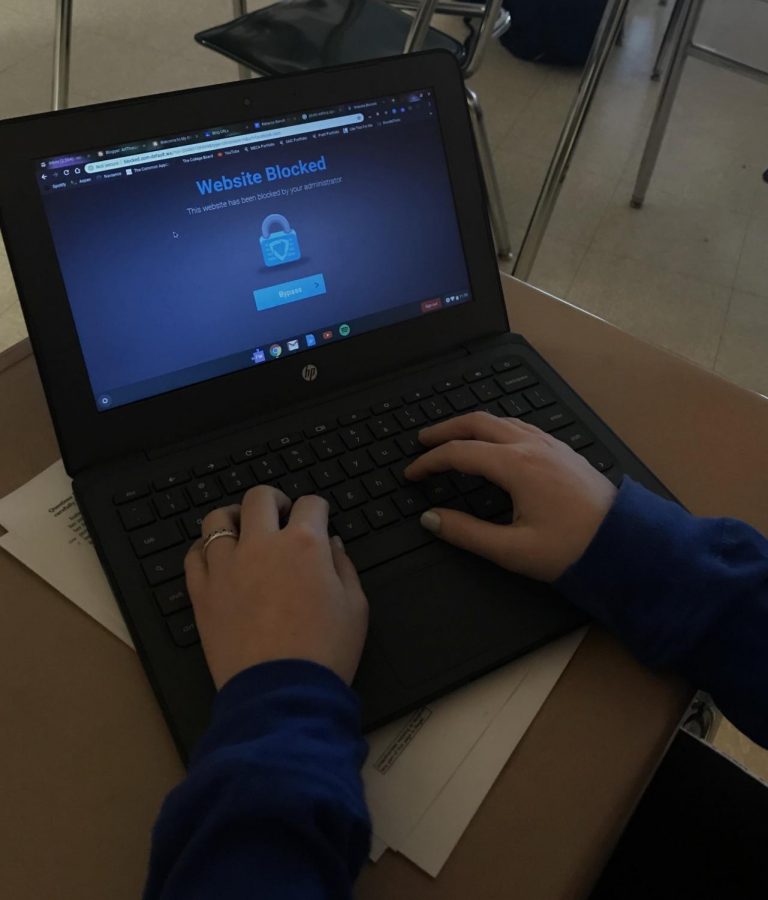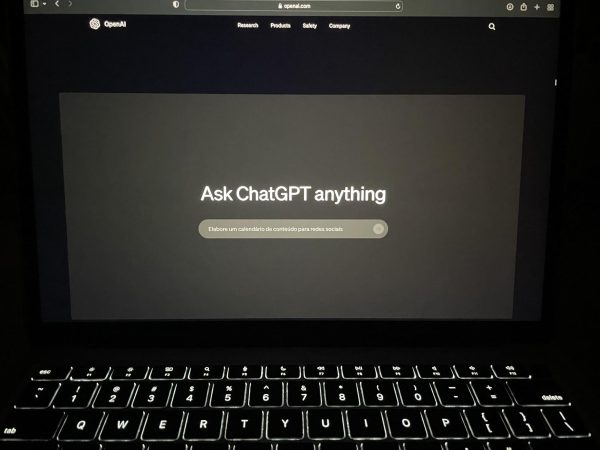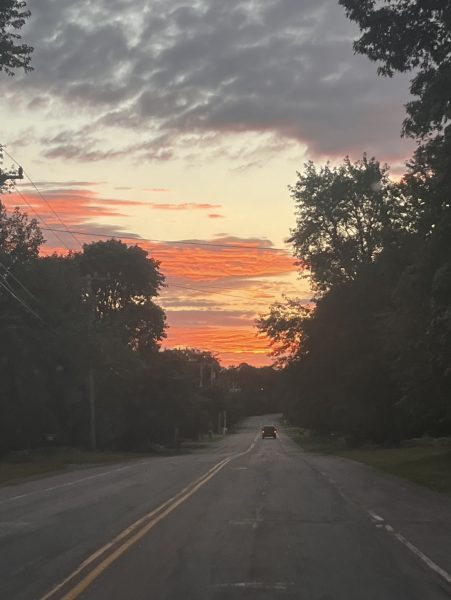Great Walls of Fire: The truth behind DHS Internet blocking
The dreaded Website Blocked screen.
Recently here at DHS there has been a blocking of popular social media apps, which has caused upset, concern, and anger throughout the student body. The situation is mostly due to a problem with the school’s new firewall and is being addressed by Chief Technology Officer Jonathan Gallishaw.
Mr. Gallishaw described it simply as a highway of information. There is a one gigabyte pipe (which is relatively speaking, huge) where separate “lanes” (being the WiFi networks) are created. “We can control the size of the lanes,” Mr. Gallishaw said. “The Chromebook lane is much larger to allow for faster connection. The public lane [what phones connect to] is smaller because it’s not a necessity, it’s a bonus rather than an educational need.”
Within the firewall are also very generalized categories and filters that can be selected to be blocked, categories so general that apps such as Instagram and iMessage get unintentionally caught up in them, though they may be almost entirely unrelated.
Apps such as Instagram, iMessage, and even Facebook, were blocked due to problems with a new firewall that was installed over break. In other words, this was not a conscious choice made by the school, but rather an issue with the system that needed to be addressed. The technology committee and administration did not realize that these apps were blocked, and after hearing some of the concerns and comments from students, the problem was fixed over the weekend of January 5 and 6.
It is thought that these apps might have been blocked by the firewall due to the amount of bandwidth they take up. This is also similar to why streaming services such as Netflix, Spotify, and Pandora were blocked. “We limited the access to certain things on the network like social media and streaming because they are bandwidth hogs, and with adding Chromebooks we wanted to make sure that they could work. Streaming and social media drags down the network,” Mr. Gallishaw said.
As for Snapchat, it was blocked due to an administrative decision based on an outside issue, that Mr. Gallishaw doesn’t know the details of, other than that it was an education-based decision.
The original problem occurred during the last week of November when Snapchat, the popular social media app, was inexplicably blocked. It was a day that students across DHS had feared, and finding a student who was happy about it was rare. The main cause for this unhappiness according to senior Malia Cafasso was that “Snapchat is a main way of communication throughout the day for many students.”
Since the cell reception in school is not known for being stellar, and texting between phones of different brands (for example, communication through iPhones and Androids) is difficult, students would just turn to Snapchat for means of communication instead. Snapchat allowed for friends who didn’t see each other during the day to keep in touch between classes and during lunch, and some students even used the app to talk to their parents.
Furthermore, Snapchat was used for practical use as well. For things such as quickly sending missed notes in class, or contacting a big group for a project or a shared assignment. “It’s an inconvenience for a lot of people who use Snapchat for things like group chats for school projects or clubs. The administration is basically punishing everyone for the behavior of a smaller group of students,” said senior Nina Lamarre.
Snap is said to be a distraction, and for some students, yes, the app with its funny filters and articles advertising “20 relatable tweets for the forever alone” and “Kylie Jenner’s most liked Instagram Photo,” can be distracting and time consuming, especially in a learning environment.
“I understand the school’s viewpoint,” said junior Jonathan Bacdayan. “Snapchat can be a distraction to learning, and they have every right to block it.”
However, Bacdayan and other students across the student body are in agreement that blocking Snap will in no way solve distraction problems. “We will always find a way to not pay attention,” he concluded.
One of those methods including turning to Instagram, which now after updates, offers similar photo communication methods similar to those of Snapchat. It was a simple solution and an effective one.
That is, until students came back on Thursday from winter break, tired, disoriented, and not wanting to be at school, to see that both Instagram and iMessage had been blocked as well. Definitely not the best way to start off the new year. This cut off just about all communication for students.
Mr. Gallishaw is in charge of the computers and technology plans in the district, and he is to thank for ordering new equipment and writing grants for the schools, such as the one for the new Innovation Lab. He is eager to talk about the situation at hand, address any concerns, squash any false claims, and open a general discussion with students about their needs for growing up in a technological age.
“The best thing is that it’s bringing up a conversation about what the students need with technology. We want to make your technology experience a good one since you’re all going to spend your life tapping into technology. It’s a healthy discussion,” Mr. Gallishaw said in an interview on Monday.
Although students aren’t getting Snap back universally (though Mr. Gallishaw does warn against the dangers of VPN apps), students do have things to look forward to in the future of technology and Chromebooks at DHS.
These improvements may include out of school printing capabilities, more site unblocking, and even allowing music streaming outside of school, since that is controlled by a separate system called GoGuardian, which monitors the Chromebooks no matter what server they are on.
Student voices are also being encouraged by the higher ups in the technology department as well as administration. “Mr. Thibault is promoting a line of communication with the teachers, where he wants students to relay information to the teachers and then go to administration,” Mr. Gallishaw said. If students have a site that they think should be unblocked, they can bring it up with their teachers and then the teachers will request access from administration to streamline the process.
“What we really need is a forum of students to come together and make a list of sites needed that are blocked,” Mr. Gallishaw said. “From a tech stand point we just see the categories rather than individual sites, which is why we need student input.”









